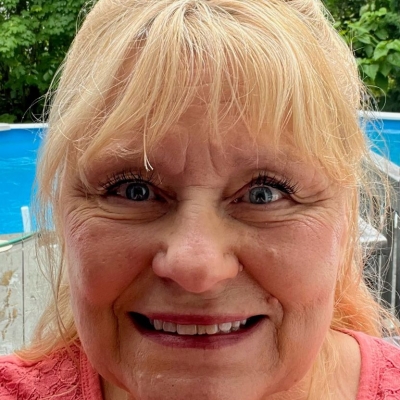Lead in Drinking Water
Tuesday, January 10, 2017 Greg Santo
Lead in drinking water has been in the news lately, the municipal water system of Flint, Michigan has not provided clean drinking water, and now there are criminal charges sought against some of the regulatory officials in that area. This development, has some people wondering about the quality of their drinking water.
Lead can enter drinking water when service pipes that contain lead corrode, especially where the water has high acidity or low mineral content that corrodes pipes and fixtures. The most common problem is with brass or chrome-plated brass faucets and fixtures with lead solder, from which significant amounts of lead can enter into the water, especially hot water.
Homes built before 1986 are more likely to have lead pipes, fixtures and solder. The Safe Drinking Water Act (SDWA) has reduced the maximum allowable lead content -- that is, content that is considered "lead-free" -- to be a weighted average of 0.25 percent calculated across the wetted surfaces of pipes, pipe fittings, plumbing fittings, and fixtures and 0.2 percent for solder and flux.
Here is what the EPA recommends:
Should I Have My Water Tested? The answer to this question depends on several factors. It concerns your health and the health of your family, so you need to know some basic facts. In addition to illness, a variety of less serious problems such as taste, color, odor and staining of clothes or fixtures are signs of possible water quality problems. Other things to think about include the nearness of your water well to septic systems and the composition of your home’s plumbing materials.
Regardless of your water source, here are two situations that may require testing. Do you suspect lead may be in some of your household plumbing materials and water service lines? Most water systems test for lead as a regular part of water monitoring. These tests give a system-wide picture, but do not reflect conditions at a specific household faucet. If you want to know if your home’s drinking water contains unsafe levels of lead, have your water tested. Testing is the only way to confirm if lead is present or absent. Some faucet and pitcher filters can remove lead from drinking water. If you use a filter to remove lead, be sure you get one that is certified to remove lead by NSF International.
Are you considering a home water treatment unit? Find out what is in your water and what you might want to remove before contacting potential dealers. Be informed so you can make the right decisions.
Public Water Systems When you turn on the tap, where does the water come from? If you pay a water bill, you are purchasing water from a public water system, where your water is monitored, tested and the results reported to the federal, state or tribal drinking water agencies responsible for making sure it meets the National Primary Drinking Water Standards. Your water company must notify you when contaminants are in the water they provide that may cause illness or other problems. Most people in the United States receive water from a community water system that provides its customers with an annual water quality report, also known as a Consumer Confidence Report. Normally, you will receive it with your water bill once a year in July. The report contains information on contaminants found, possible health effects, and the water’s source. If you do not receive a report, contact your water company for this information.
Private Water Supplies If your drinking water does not come from a public water system, or you get your drinking water from a household well, you alone are responsible for assuring that it is safe. For this reason, routine testing for a few of the most common contaminants is highly recommended. Even if you currently have a safe, pure water supply, regular testing can be valuable because it establishes a record of water quality. This record is helpful in solving any future problems and in obtaining compensation if someone damages your water supply.
The following items will help you determine when to test your private drinking water supply. How frequently should I test?
Test water every year for total coliform bacteria, nitrates, total dissolved solids and pH levels, especially if you have a new well, or have replaced or repaired pipes, pumps or the well casing. Do you expect to have a new baby in the household?
Test for nitrate in the early months of a pregnancy, before bringing an infant home, and again during the first six months of the baby’s life. It is best to test for nitrate during the spring or summer following a rainy period.
Do you have taste, odor and staining issues? Test for sulfate, chloride, iron, manganese, hardness and corrosion, and every three years. If you suspect other contaminants, test for these also.
Have you had a chemical or fuel spill or leak near your water supply? Test your well for chemical contaminants, such as volatile organic compounds. Tests can be expensive; limit them to possible problems specific to your situation. Local experts can tell you about possible impurities in your area. Is someone in your household pregnant or nursing an infant?
Are there unexplained illnesses in your family? Do you notice a change in water taste, odor, color or clarity? You may need to test more than once a year. Do you know who can test your water? Often county health departments will help you test for bacteria or nitrates. If not, you can have your water tested by a state certified laboratory.
Collecting Samples Most testing laboratories or services supply their own sample containers. Use the containers provided and carefully follow the instructions given for collecting, preserving and handling water samples. Samples for coliform bacteria testing must be collected using sterile containers and under sterile conditions. Some procedures require that water runs from an outside tap for several minutes before filling the sample containers. Laboratories may sometimes send a trained technician to collect the sample or to analyze the sample directly in your home. Ask if this service is available, since you may obtain better samples and more reliable test results.
The EPA has guidance on clean drinking water, for more information, visit www.epa.gov/safewater/ lead, or call the Safe Drinking Water Hotline at 1-800-426-4791.




.jpg)